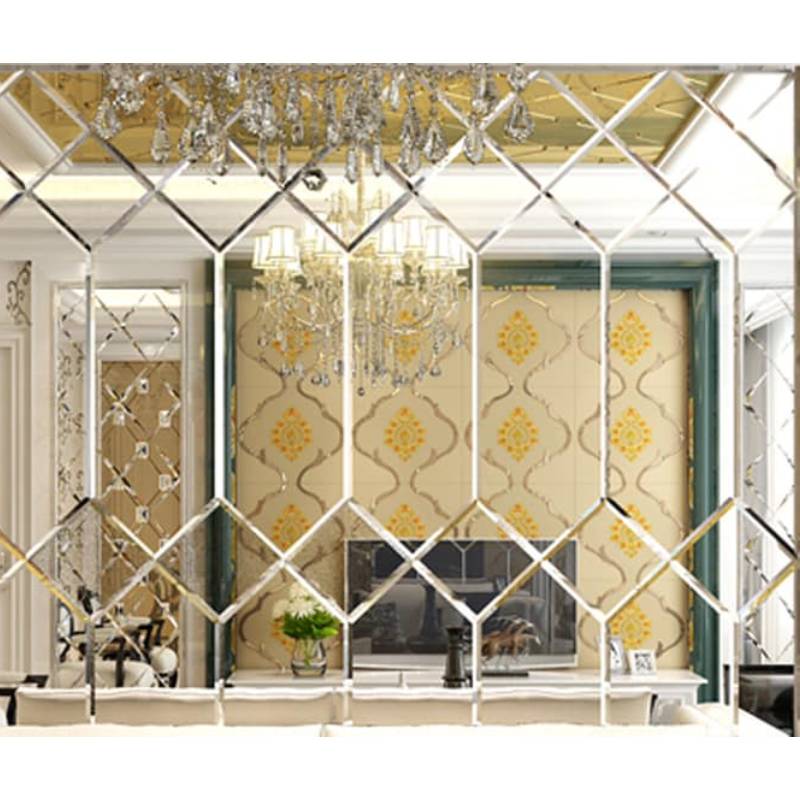Architectural Laminated Glass Revolutionizing Modern Design
In the realm of modern architecture, laminated glass has emerged as a revolutionary material, transforming the way we approach both aesthetics and functionality. Architectural laminated glass is composed of two or more layers of glass bonded together with a robust interlayer, typically made from polyvinyl butyral (PVB) or ethylene-vinyl acetate (EVA). This unique construction not only enhances the visual appeal of structures but also significantly improves safety and energy efficiency.
One of the most significant advantages of architectural laminated glass is its safety features. In the event of breakage, the interlayer holds the shattered glass fragments in place, preventing dangerous shards from falling and causing injury. This is particularly vital in high-rise buildings, facades, and areas with heavy foot traffic. Additionally, laminated glass provides increased resistance to impact, making it an excellent choice for locations that may be susceptible to vandalism or extreme weather conditions. Furthermore, it can also assist in reducing noise pollution, creating a more serene indoor environment by dampening external sounds.
Aesthetically, laminated glass opens up a world of design possibilities. Architects and designers can incorporate various colors, textures, and even printed patterns into the interlayer, allowing for creative expression that traditional glass cannot offer. This customizability makes laminated glass a preferred choice for modern designs, enabling unique and striking facades that can reflect the identity of a building and its environment. Moreover, the ability to combine laminated glass with other materials, such as metal or wood, enhances the versatility of architectural projects.
architectural laminated glass
Energy efficiency is another critical aspect where laminated glass stands out. The incorporation of low-emissivity (low-E) coatings within laminated glass systems can significantly reduce heat transfer, contributing to lower energy costs for heating and cooling. This is increasingly important as sustainability becomes a priority in the construction industry. By reducing reliance on artificial heating and cooling systems, laminated glass not only benefits building occupants but also aligns with global efforts to reduce carbon footprints and promote environmentally friendly practices.
Laminated glass also offers a high level of UV protection, blocking up to 99% of harmful UV rays. This feature is particularly beneficial for spaces that house artwork, antiques, or sensitive materials that can be degraded by sunlight exposure. With its ability to filter light without sacrificing visibility, laminated glass creates bright and inviting spaces that enhance the overall ambiance of a building.
Lastly, the installation of architectural laminated glass can contribute to a building's overall value. Not only does it improve the safety and aesthetic appeal of a structure, but it also positions the building as a contemporary and high-performance space in the eyes of potential investors or occupants.
In conclusion, architectural laminated glass stands at the intersection of functionality, safety, and beauty, making it an indispensable material in modern architecture. As we continue to innovate and explore new design possibilities, laminated glass will undoubtedly play a pivotal role in shaping the future landscape of our built environment. Its unique characteristics not only cater to the demands of contemporary design but also promote a safer, more sustainable world.
 Afrikaans
Afrikaans  Albanian
Albanian  Amharic
Amharic  Arabic
Arabic  Armenian
Armenian  Azerbaijani
Azerbaijani  Basque
Basque  Belarusian
Belarusian  Bengali
Bengali  Bosnian
Bosnian  Bulgarian
Bulgarian  Catalan
Catalan  Cebuano
Cebuano  Corsican
Corsican  Croatian
Croatian  Czech
Czech  Danish
Danish  Dutch
Dutch  English
English  Esperanto
Esperanto  Estonian
Estonian  Finnish
Finnish  French
French  Frisian
Frisian  Galician
Galician  Georgian
Georgian  German
German  Greek
Greek  Gujarati
Gujarati  Haitian Creole
Haitian Creole  hausa
hausa  hawaiian
hawaiian  Hebrew
Hebrew  Hindi
Hindi  Miao
Miao  Hungarian
Hungarian  Icelandic
Icelandic  igbo
igbo  Indonesian
Indonesian  irish
irish  Italian
Italian  Japanese
Japanese  Javanese
Javanese  Kannada
Kannada  kazakh
kazakh  Khmer
Khmer  Rwandese
Rwandese  Korean
Korean  Kurdish
Kurdish  Kyrgyz
Kyrgyz  Lao
Lao  Latin
Latin  Latvian
Latvian  Lithuanian
Lithuanian  Luxembourgish
Luxembourgish  Macedonian
Macedonian  Malgashi
Malgashi  Malay
Malay  Malayalam
Malayalam  Maltese
Maltese  Maori
Maori  Marathi
Marathi  Mongolian
Mongolian  Myanmar
Myanmar  Nepali
Nepali  Norwegian
Norwegian  Norwegian
Norwegian  Occitan
Occitan  Pashto
Pashto  Persian
Persian  Polish
Polish  Portuguese
Portuguese  Punjabi
Punjabi  Romanian
Romanian  Russian
Russian  Samoan
Samoan  Scottish Gaelic
Scottish Gaelic  Serbian
Serbian  Sesotho
Sesotho  Shona
Shona  Sindhi
Sindhi  Sinhala
Sinhala  Slovak
Slovak  Slovenian
Slovenian  Somali
Somali  Spanish
Spanish  Sundanese
Sundanese  Swahili
Swahili  Swedish
Swedish  Tagalog
Tagalog  Tajik
Tajik  Tamil
Tamil  Tatar
Tatar  Telugu
Telugu  Thai
Thai  Turkish
Turkish  Turkmen
Turkmen  Ukrainian
Ukrainian  Urdu
Urdu  Uighur
Uighur  Uzbek
Uzbek  Vietnamese
Vietnamese  Welsh
Welsh  Bantu
Bantu  Yiddish
Yiddish  Yoruba
Yoruba  Zulu
Zulu 

